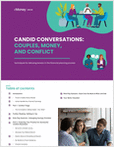This is an opportune time to launch index universal life (IUL) insurance. Of course, compared to total universal life sales, IUL is still just a baby, having been in existence for only a decade and with sales at less than 10% of total UL sales industrywide. By comparison, traditional UL has been around for nearly 30 years and is now a mature fixed-rate product.
But IUL sales have set records every year since the 2003 entry of a competitive no-lapse guarantee IUL into the brokerage market. In fact, the market that started with just over $64 million in sales back in 1998 nearly doubled sales from 2003 to 2005, and sales jumped 82% from 2005 to 2006.
Now, there are 24 carriers in the market and 6 more about to enter.
Three ingredients are needed to succeed is this emerging product line: training, sales support and marketing.
Training. The one thing that stops producers from selling IUL, as opposed to traditional UL or VUL, is that they don’t understand it. They’ve never been introduced to it, and they want the carrier to “hold their hand” when they start.
Feedback from producers and carriers indicates that once a producer has been successfully guided through their first IUL case–from product training through first illustration to new business and issue–they like IUL and keep selling it. The trick is getting producers through that first case.
To maximize success in this area, carriers should foster strong understanding of the market and its terminology. Failure here can lead to miscommunication at product launch as well as opening up a sale to replacement by competitors.
Sample problems: One carrier was using an asset fee/spread with its IUL without being aware that its “charge” was called an “asset fee” or “spread.” In another example, a rep improperly described the IUL’s minimum guarantee–a problem resulting from the rep not knowing the difference between a guaranteed annual return minimum and a minimum that is credited over the life of the contract (the newest trend in IUL minimum guarantees).
Training shouldn’t stop in the marketing department. When IUL launch is near, all departments need training for comprehension and support.
Sales materials. Use knowledge of the market and product expertise to provide in-depth sales materials. This can make the difference between recruiting the “big fish” and losing him/her.








 March 18, 2007 at 08:00 PM
March 18, 2007 at 08:00 PM










